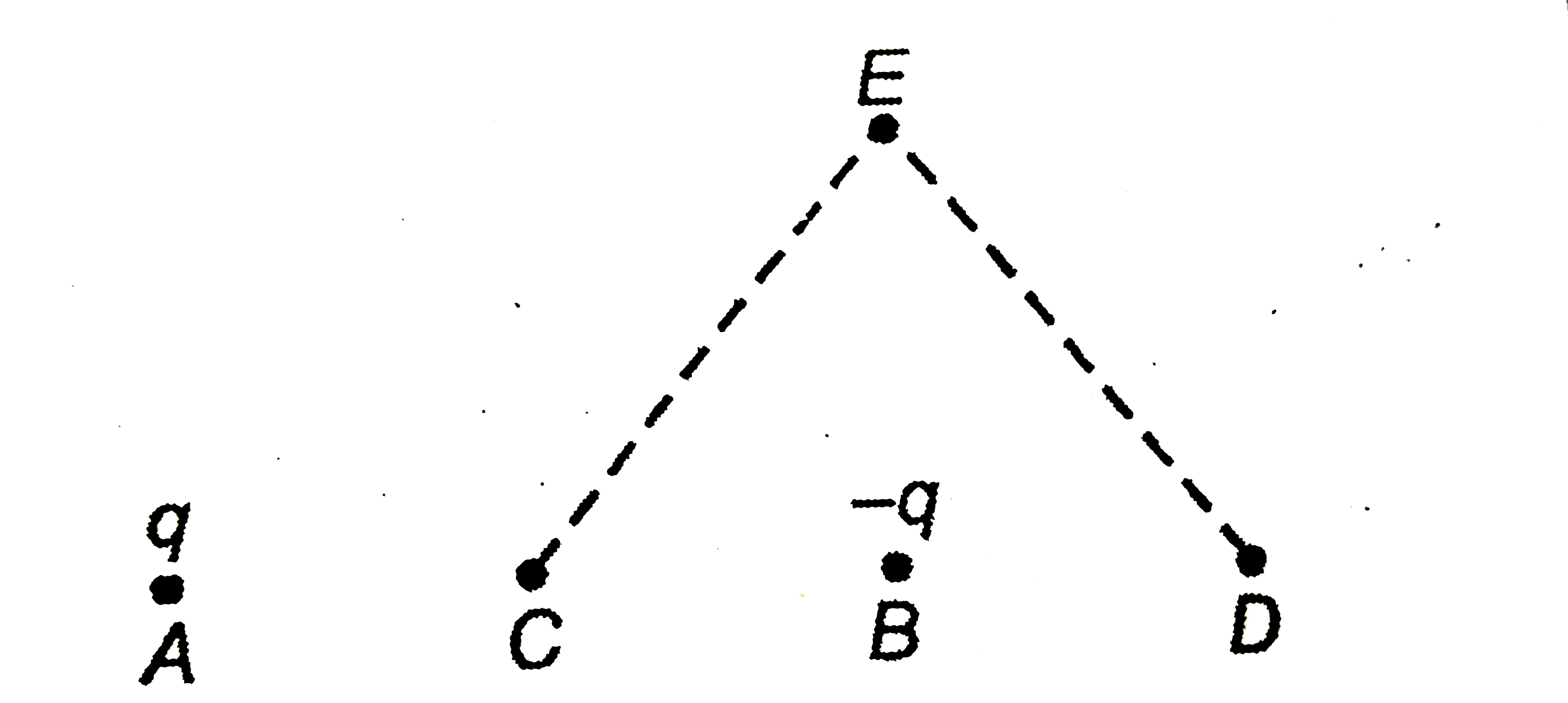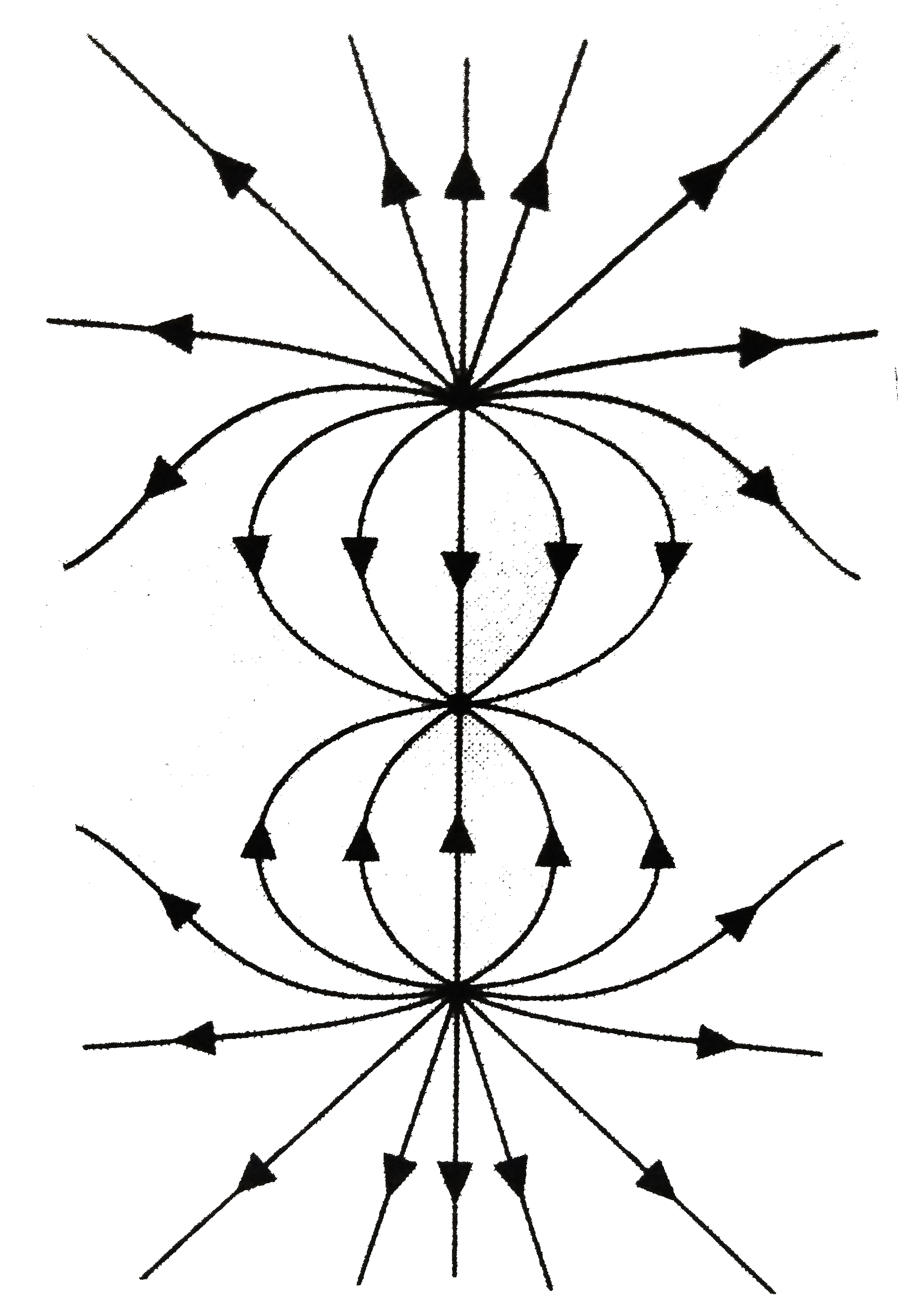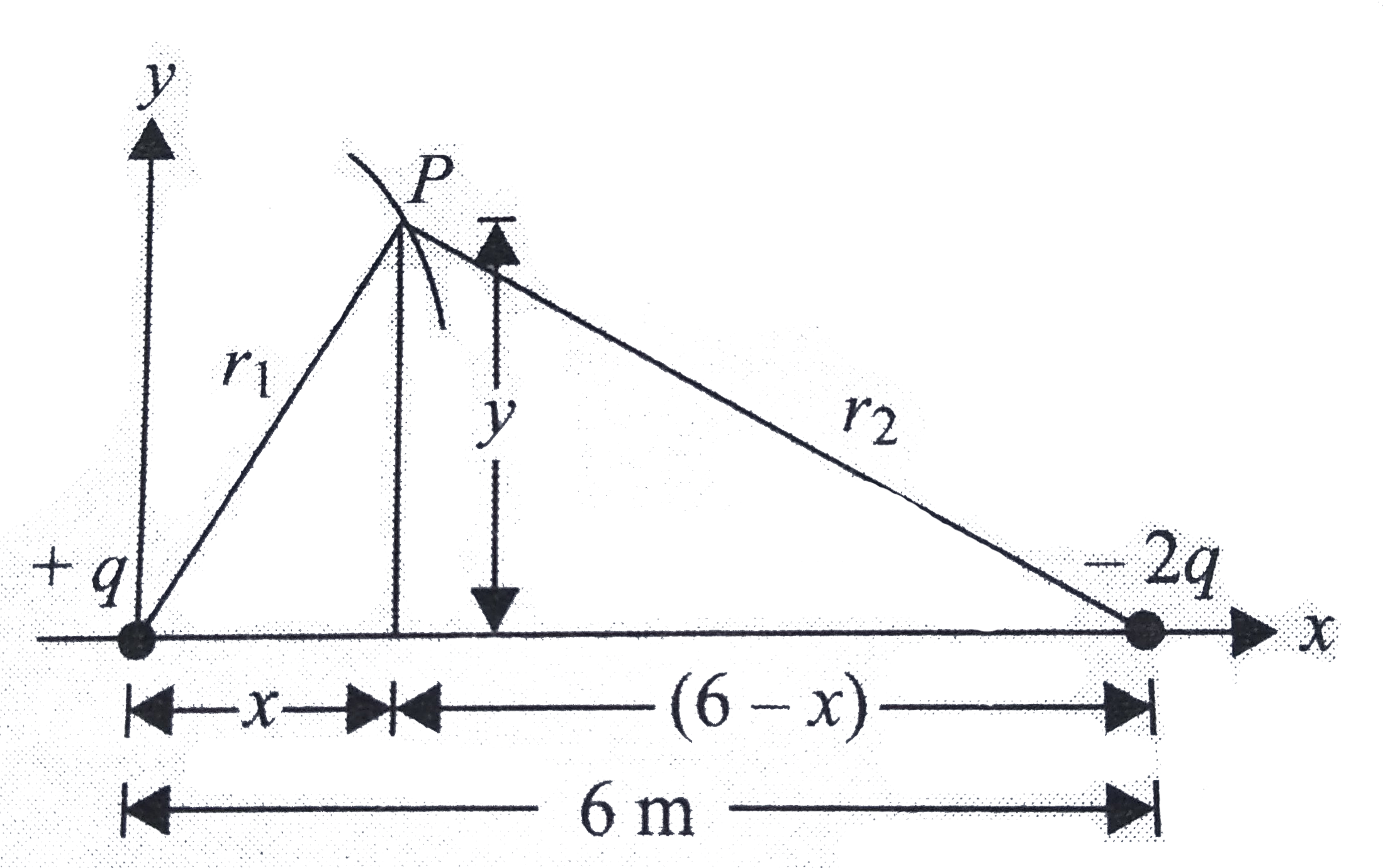Two small sphres of radius 'a' each carryig charges +q and −q and placed at points A and B, distance 'd' apart. Calculate the potential difference point A and B.
The correct Answer is:2q/4π∈0d
Potential between A and B =VA−VB
=14π∈0×qd−14π∈0(−q)d=2q4π∈0d
Topper's Solved these Questions
- BOOK - PRADEEPCHAPTER - ELECTROSTATICSEXERCISE - MULTIPLE CHOICE QUESTIONS5videos
ELECTROSTATICS
- BOOK - PRADEEPCHAPTER - ELECTROSTATICSEXERCISE - COMPREHENSION2videos
ELECTROSTATICS
- BOOK - PRADEEPCHAPTER - ELECTROSTATICSEXERCISE - FILL IN THE BLANKS8videos
ELECTROSTATICS
- BOOK - PRADEEPCHAPTER - ELECTRONIC DEVICESEXERCISE - Fill in the Blanks1videos
ELECTRONIC DEVICES
- BOOK - PRADEEPCHAPTER - MAGNETIC EFFECT OF CURRENT AND MAGNETISMEXERCISE - Competition Focus (Multiple Choice Questions)2videos
MAGNETIC EFFECT OF CURRENT AND MAGNETISM
Similar Questions
Two small sphres of radius 'a' each carryig charges +q and −q and placed at points A and B, distance 'd' apart. Calculate the potential difference point A and B.
View SolutionPositive and negative charges of 1μC each are placed at two points as shown in the figure. Find the potential difference between A and B
 View Solution
View Solution
Knowledge Check
- Question 1 - Select One
Two point metal charges−q and +2q are placed at a certain distance apart.Where should a third point charge be placed so that it is in equilibrium?
Aon the line joining the two charges on the right of +2qBon the line joining the two charge on the left of −qCbetween −q and +2qDat any point on the right bisector of the 1 line joining −q and +2q - Question 2 - Select One
Two point charges +q and -q are placed at point A and B respectively which are at a distance 2m apart. C is the midpoint between A and B. The work done by external agent in moving a charge Q slowly along the triangular path CED
(AC=BC=BD)
 A25kQqB−23kQqC−kQq4DkQq2
A25kQqB−23kQqC−kQq4DkQq2 - Question 3 - Select One
A charged spherical conductor of radius R carries a charge Q. a point charge q is placed at an outside point at a distance x from the surface of the sphere. The force experienced by the point charge will be proportional to
A1x2B(R+x)2C1(R+x)2D1(R−x)2
‘A point charge +Q is placed at point O as shown in the figure. Is the potential difference VA–VB positive.
 View Solution
View SolutionFig. shows some of the electric field lines due to three point charges arranged along the vertical axis. All three charges have the same magnitude.
(a) What are the signs of each of the three charges? Explain your reasoning.
(b) At what points(s) is hte magnitude of hte electric field the smallest? Explain your reasoning. Explain how the fields produed by each individual point charge combine to give a small net field at this point or points.
(c ) Two point charges q and -q are placed at a distance d apart. What are the points at which the resultant electric field is parallel to the line joining the two charge?
 .View Solution
.View SolutionTwo electric charges qand−2q are placed at a distance 6 m apart on a horizontal plane. Find the locus of point on this plane where the potential has a value zero.
 .View Solution
.View SolutionTwo charges q1andq2 are placed at (0,0d)and(0,0−d) respectively. Find locus of points where the potential is zero.
View SolutionTwo point charges A and B, having charges +Q and -Q respectively, are placed at certain distance apart and force acting between them is F, if 25% charge of A is transferred to B, then force between the charges becomes:
View Solution

